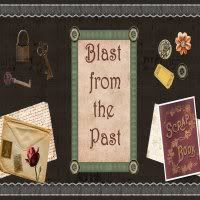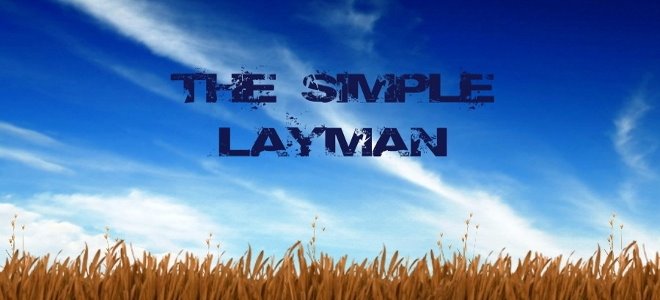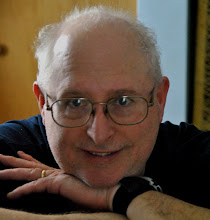Ok, I promised it. Here are pictures developed in old film chemistry. Not too bad. Scans done at local pharmacy with techs that don't really have control over outcome so I tried to adjust them in gimp as best I could. My old zone skills are the pits and I was trying to over expose and underdevelop the negatives. What I got was a bit too much contrast but the shadow details were good for the most part. The developer was T-max 1:6 underdeveloped by 2 minutes. Still, not too bad. I was using my daughter's Nikon FM which has a broken meter so I was doing all of my shots using a hand-held meter and shooting for the shadows.
The lens was a 35-70mm f3.5 Nikon AIs zoom. sharpness is great compared to my Canon FD lenses. You can't tell that by these low resolution scans but through the magnifying loupe I can read all of the words on the sign in front of the building in the one scan of the short wall in front of the windows in the above picture. Not bad for a zoom lens.
Here are some daffodils taken with the same.
I thought the scene below was cool. I was looking under the trees in a small opening behind a wall and saw this small tree. The flowers under it looked like snow in the bright sun. I knew it was a perfect scene for extreme contrast lighting that would test the old film. It didn't turn out bad at all. Can't wait to get in the darkroom and see how much better they look hand-done on some good B & W paper.
Well, if you read my past blog you know I started photography again after a long (maybe 10 year) rest from it. Today my son and I took photographs with some old Kodak T-Max 400 film that sat in the freezer for 4 years and on a shelf for another two or so. We developed the film tonight with chemistry that was at least 8 years- maybe 10 years old. Guess what! Except for a slight film fog the film and chemistry did fine. As soon as I can get a couple of scans at a local lab I will be posting them. Hooray!

Well, I'm helping my wife with her blast from the past again and I must say I'm actually enjoying doing this. My wife was posting a photo of herself for her "blast of the past" item and it was a "colored" photo. She thought it was just done on color film so I had to explain to her the difference. Back in the late 50's and early 60's color film was still in it's infancy. Most pictures taken with color film often faded very quickly-sometimes in as little as a couple of years. For this reason many photographers and labs would offer "hand-colored" black and white photos for weddings or school pictures that were considered to last a lifetime. Color prints made on color photo paper is for the most part still quite unstable and photos I have done just a few years ago are now fading (and I processed them myself washing the fixer out of some of them for an hour or more). While you can still buy paints for hand-coloring it is rare to find a photo shop or photographer who will do this. It has truly become a lost art.
Here is my blast from the past "hand-colored" photo taken during my graduation year. You can tell it is hand colored by the colors overlapping in the border area (of course you can tell when it is shown at full size too by clicking on the photo).
Ok. My wife asked me to do this. She is my sweetheart and I want to make her happy. Here is a picture that I found sitting on top of some old boxes someone was throwing out way back in 1975 or so. I asked the woman whose house they were in front of if I could have it and asked the history behind it. She said her husband had been a photographer and had done some pictures for this theatre but he had passed away several years before and she didn't think anyone would want this photo (along with some others that were with it) so she threw it out. I have kept it over the years. I think historical photos are neat. They often tell a story in a way few modern pictures aren't able to tell.
This one is of the "Rivoli Theatre" back entrance. Click on this link to go to a page that tells a little more about the theatre.

If you want to see more "Blast From The Past Posts" click on the Blast From The Past button at the top of this post.
The one thing I love about linux is all of the open source software. For imaging software in windows you can use software costing up to thousands. In linux there is gimp, cinipaint, xnview, irfanview and others. I have been using mostly gimp and irfanview but am going to experiment with xnview which is similar to irfanview.
I use ubuntu 8.10. For ubuntu there is no deb program to install xnview. I converted xnview rpm to deb. For those who want to try it there is a link to a download file that is already converted for you. Gimp already comes with Ubuntu 8.10 and doesn't need to be installed. For irfanview I recommend using wine-doors, a program that installs wine (name stands for "Wine Is Not an Emulator") onto the computer. After the installation or wine-doors you will see a list of already created programs you can download. You can click on the irfanview file (a standard.exe installation file for windows) that wine-doors has adjusted to work with wine. You will go through the standard windows installation procedures you are familiar with. Wine will be listed in your taskbar menu and you will see it in the list of programs there.
Download Wine-doors here (choose ubuntu debian at top of list)
Download Xnview.deb here at "sharecow.com"
I love digital photography but one of the problems I noticed when using a digital camera is the lack of control of latitude, or the ability to capture extremes of light and dark, that you get with a film stock. When I was using black and white (and to some degree color) with the zone system there was greater ability to control contrast and highlights in scenes. What I noticed happening with digital photography was this, when you photographed scenes with bright highlights (a white scarf, snow, flower petals) the sunlit portions of the photo would be all washed out and lacking detail. Once the highlights fell out of the range of the cameras ability to record them they were lost forever and could not be brought back. If, for instance, I was photographing a picture of a light colored flower and part of the petals fell into bright sunlight and part in the shade, the area in the bright sunlight would photograph as one solid color instead of just being lighter with detail.
With film you could compensate for this by over-exposing the film to capture the shadow detail, and then under-develop the film to compensate so the highlights would not get blocked up. Later, in the darkroom you could burn (allow more light to reach light portions of the print), and dodge (prevent too much light from reaching the dark areas of the print). Contrast could be controlled by using multigrade papers and contrast filters or using two-part developers on a single contrast paper.
With digital some compensation can be made by decreasing the contrast in the control menu of the camera and adjusting the exposure to not overexpose the highlight (which to some degree will make it lose shadow detail). Sometimes the shadows get lost completely when adjusting this and become one solid mass of dark in the image. Obviously, with more expensive cameras come better control of this but since this is geared towards learners and I do not consider myself an expert-I am just passing on some advice I have come to know is true that may help others.
Below are two examples of this. The first is a photograph my daughter took with my wife's digital nikon where the light was coming through the window. You can see the bright areas have no detail. This detail is lost and cannot be regained. The second one was taken by my son with his nikon EM. It shows what I was thinking at the time. Film has greater latitude and didn't even lose detail in the light areas of the flowers.
Picture taken by my daughter with my wifes nikon digital camera. Notice the loss of detail and "flattening" of color in the bright (highlight areas of the print) in the enlarged section.
Click on the photos to see a larger image.
Picture taken by my son on film in full daylight. Even in the poor quality scan done by our local pharmacy you can see details in the highlight areas and with the limitations of the scanning equipment and the technician there is still shadow detail. Believe me when I say the scan does not do justice to the quality of the image on the negative.
With digital there are at least a couple of ways to help. First, photograph subjects in the shade. For subjects like flowers you can photograph them on an overcast or cloudy day. This will produce even lighting in the shadows while not throwing sun on portions of the subject. Colors too will stand out without so many light areas standing out. There may be some color correction needed because the picture may take on a blue cast from being in the shade. If you must photograph in the sun be conscious of the effects and use a fill flash or use a trick which they use in studio lighting. Carry a white cardstock with you and bounce sunlight onto the shady portions of the subject. This works best with smaller subjects like flowers or getting light to the darker side of ones sunlit face.
Example of digital photo adjusted -2 in my wife's digital camera to allow for highlights (notice the dew on the petals when enlarged by clicking on the photo)
Example of digital photo taken in shade with no camera correction (notice that even though this flower has mostly white petals it still retains some detail though many shadow details are lost)
If all this seems like a foreign language to you just remember when photographing subjects in bright sunlight to photograph them in the shade and for subjects like flowers that can't be moved to the shade photograph them on cloudy days. If you are using a film camera compensate for the blue cast by using a skylight 1A or 2A filter or getting the photos scanned and adjusting them in gimp or some other type of photoshop program. This will help.
I fell in love with photography when I was in college. Over the years that love began to grow and at one time ran a quality photo lab until it went out of business due to finances and competition in the area. When the company went out of business so did my resources. I was never well off and the photo lab gave me access to cheap processing of my pictures and a place to do my thing so to speak. With that well run dry photography took a second seat to my other work skills that I had to use to support my family. That was in 1994 when my oldest son was born. The camera pretty much sat in the closet collecting dust. Well, I did take it out once in a while to take a family photo or two but for the most part I didn't touch it.
Sometime along the way since then my wife got a small 3 megapixel camera to take photos of the kids since I hadn't been and she wanted to catalog their growing years. I did pick up an old 3D David White realist camera a few years back that I lovingly restored and took some 3D slides with but over a few months time this too went to the back of the closet.
It wasn't until this year that my cameras came out of the closet. My youngest daughter became interested in photography and began asking me questions and so I had to pick my brain for the answers. My daughter needed to understand what went on behind the pictures she was taking and how the camera saw things differently than her eyes did. She began asking me all sorts of questions related to photography. I realized she wanted more than to just point and shoot. She wanted to control what went into the camera and what came out as a print. While explaining to her on a couple of photo expeditions together I would see in my mind all the details of the scenes and the camera controls for shots she was taking. When I did a desire began again to pick up the old cameras and this began my fascination all over again.
As I began to investigate what was needed to restore my cameras I noticed something had changed along the way. Photography had changed. What was the beginnings of digital photography (you know, the 1 megapixal cameras of the 90's) was now in full bloom. Digital had taken over the world. Film as it seemed from a consumer point had become dead. Everything now was done with memory cards or by sending it directly over the internet. I was pleased to find in searching that almost all of the stuff like chemistry, enlargers, papers, film, darkroom supplies was still available (surprise! it even had the same labeling as back then). It just wasn't available in my local photo shops anymore but there was still a healthy following and I could still show her how to do black & white printing if she wants. The downside was there were now only two companies that had a 35mm SLR camera with changible lenses available. I ended looking on ebay and finding two nikons with 50mm lenses almost "dirt" cheap for my daughter to play around with so I could teach her about aperatures, f/stops, shutter speeds, and depth of field.
Digital photography had come of age and was the big player now. Everything was digital from a commercial point of view which isn't a bad thing. It's just that I didn't think just snapping a photo digitally and sending it to a photo lab would give her an understanding of light and how it affects the scene in the final print. I wasn't suprised that she took to the totally manual camera. There is something about a mechanical camera and the way it feels to focus it and crank the film advance. She fell in love with the Nikon so much that when I purchased a manual Minolta SRT 101 in a thrift shop for $24.00 she didn't want to part with the Nikon.

















